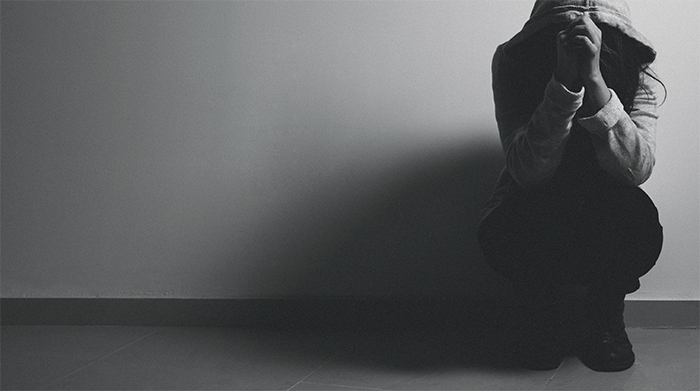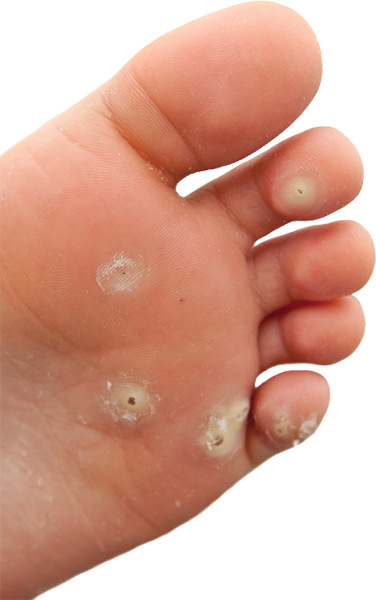OTC

Child & teenage health
In OTC
Bookmark
Record learning outcomes
One in 10 young people will experience a mental health problem due to the social and academic pressures that come with being a teenager.

Learning objectives:
After reading this feature you should be able to:
- Recognise the signs of mental health issues in teenagers
- Signpost both young people and their parents to reliable sources of information
- Advise on treating a wide range of common ailments.
According to the children and young people’s mental health charity, YoungMinds, the proportion of 15 to 16-year-olds who say they frequently feel anxious or depressed has doubled in the past 30 years to two in 30 boys and two in 10 girls. So what is behind these increases?
A HSCIC report involving 120,000 15-year-olds in England found more than half (55 per cent) said they had experienced some form of bullying in the past couple of months.1 Those who had been bullied were more likely to report low satisfaction with life (19 per cent) than those who had not experienced bullying (7 per cent). Around twice as many girls (19 per cent) reported cyber-bullying than boys (10 per cent).
Data from YoungMinds shows that 55 per cent of children who had been bullied later developed depression as adults, while the HSCIC study claims that children with generalised anxiety disorder and depression had the most days off school – a quarter had been absent more than 15 days in the previous term.
Andy Bell, deputy chief executive at the Centre for Mental Health, which works to improve the quality of life for people with mental health problems, says that while “bullying is a risk factor for emotional problems in children such as anxiety and depression”, the trigger for the problems is “less important than getting help for the problem itself.”
Body image issues
Young people are often bullied about the way they look, which can lead to them developing insecurities around their bodies that then escalate into eating disorders.
The number of young people calling Childline for help about eating disorders has increased by 110 per cent since 2011, and the number of hospital admissions across the UK for 13 to 19-year-olds with eating disorders has nearly doubled in the past three years (from 959 in 2010/11 to 1,815 in 2013/14).
Girls were twice as likely as boys (46 per cent versus 23 per cent) to think they were ‘too fat’. Only half (52 per cent) of all young people thought their body was ‘about the right size’, 12 per cent thought they were ‘a bit too thin’, and 2 per cent thought they were ‘much too thin’.
Perceptions of body image also varied according to experience of bullying. Those who had been bullied within the past couple of months were less likely to say they were ‘about the right size’ than those who had not been bullied (44 per cent compared to 63 per cent). Forty-two per cent who had been bullied thought they were ‘too fat’ in comparison with 25 per cent of those who had not been bullied.
Sitting targets
One way young people can feel better about their bodies is by improving their fitness and activity levels. It is well known that regular moderate to vigorous physical activity has significant benefits to health, from increased musculoskeletal and cardiovascular health to psychological benefits such as reduced anxiety and depression.
WHO guidelines advise that children undertake at least an hour of moderate to vigorous physical activity daily but the HSCIC report found that, on average, only one in seven young people said they had participated in at least an hour of physical activity every day in the past week. Seven in 10 young people said they usually spent seven hours or more a day undertaking sedentary activities when not at school.
While overall sedentary time did not differ greatly by gender, the patterns of behaviour did vary, with boys playing computer games and girls spending time using a smartphone. One way to overcome these worrying levels of inactivity is to harness the power of digital communication to reach out to young people, says Andy Bell.
“Every new technology that has ever appeared has caused scares around how young people are using it,” he says, “so rather than despairing of the fact that young people use the internet for most of their information and social interactions, we should try to find credible ways of working with them through these media.”
Be the change
With community pharmacists known for being approachable, it is important the pharmacy team is aware of what resources are available for young people, parents and professionals.
It is often very difficult for parents of teenagers to identify the difference between what is simply normal teen behaviour – such as being surly or withdrawn – and the signs of early mental health issues, says Andy Bell. “Lots of teens never get any support, so if parents are concerned, then it is very important that community pharmacy can help refer them on.
“For example, the YoungMinds parents’ helpline is the only dedicated resource for parents looking for help regarding their child’s mental health. There is also MindEd, which is a free educational resource on children and young people’s mental health for all adults.
“We also know that teens themselves are least likely to seek help from formal sources, but instead turn to their friends and the internet – and there is good information available on the internet that pharmacy teams can also suggest, such as NHS Choices and YoungMinds.”
“As well as the YoungMinds site, HeadMeds is a new portal created for young people with everything they might want to know about the most common mental health medicines and conditions, but didn’t want to ask,” says Lucie Russell, director of campaigns and media at YoungMinds.
Written by an expert pharmacist and reviewed by the College of Mental Health Pharmacy in partnership with the Royal College of GPs, it is amazing how it has taken off with young people – and we know parents and professionals are using it as well, she says, a user base that Andy Bell champions.
“It is the whole fabric of a teenager’s life that has an effect on their mental health, so as well as pharmacy teams being able to spot the signs of something through a short-term interaction, it is also helpful to know what resources are available to refer them and their parents to,” he says.
“Pharmacies have screeds of leaflets about physical health issues, but there might only be one on depression. Yet a quarter of all ill health, and more than a quarter of child ill health, is vastly psychological.
“‘Time to Change’ is the big mental health anti-stigma campaign, YoungMinds has brilliant resources, as does the Royal College of Psychiatrists – all of which are about creating opportunities for conversations. Giving people the chance to pick up a leaflet and start thinking about mental health may be the prompt they need to ask for help.
“There is no wrong time or place in the health system to ask for help. Pharmacists and their teams are experienced enough to treat these situations with sensitivity and respect.”
Fifty-five per cent of children who had been bullied later developed depression as adults
Reference
Common health problems affecting children and teenagers
Head lice
 As well as advising parents on the most effective head lice treatments, community pharmacists are well placed to advise on their use. Whatever solution parents choose, it should be stressed that the treatment should only be used where an infestation has been confirmed by the presence of a live, moving louse, and should be repeated a week later in order to deal with any lice that have hatched out since the first treatment.
As well as advising parents on the most effective head lice treatments, community pharmacists are well placed to advise on their use. Whatever solution parents choose, it should be stressed that the treatment should only be used where an infestation has been confirmed by the presence of a live, moving louse, and should be repeated a week later in order to deal with any lice that have hatched out since the first treatment.
Parents may suspect that a head lice product hasn’t worked properly when, in fact, the instructions were not followed correctly or not everyone infected was treated at the same time.
Warts and verrucas
Customers should be advised to use OTC wart and verruca treatments with care because they are generally tissue destructive. Many contain salicylic acid, which should not be applied to healthy skin.
Warts are caused by the human papilloma virus (HPV), which encourages keratin (a protein in the top layer of the skin) to grow too much, producing the hard texture of the wart. Most warts clear up on their own accord but this can take a couple of years, so the right treatment can usually help get rid of them faster.
Verrucas are warts that develop on the plantar surface (soles) of the feet and are easily picked up by walking barefoot in changing rooms or at swimming pools. Up to 80 per cent resolve themselves within about two years, but, again, OTC treatments can speed up the process. Cryotherapy treatments that freeze the verruca are available.
Acne
Acne is very common among teenagers and often begins with hormonal changes, such as during puberty or menstruation.
There is no evidence that eating chocolate or fried foods exacerbates the condition, but it is important to maintain a healthy and balanced diet. Keeping skin clean and washing and moisturising using gentle, non-comedogenic products, rather than harsh scrubs that can irritate the skin, can help.
Some OTC treatments available for mild acne contain active ingredients such as benzoyl peroxide or nicotinamide to kill bacteria and make the skin less oily. Teenagers should be encouraged to persist with treatment as it may take several weeks or months before an improvement is seen.
If the acne is more severe customers should be referred to their GP, who may prescribe an antibiotic or retinoid cream or gel, or refer them on to a dermatologist who may prescribe isotretinoin (Roaccutane). The use of gentle cleansing and moisturising products can again be recommended to counteract any dryness and irritation resulting from treatment.
Period pains
Teenage girls can find adjusting to monthly periods hard. It is estimated that over half of women in the UK suffer from dysmenorrhoea and, while some women experience mild discomfort, others suffer to such an extent that it affects their ability to get on with their ordinary day-to-day lives. Cramping can usually be managed with NSAIDs, such as ibuprofen, naproxen or mefenamic acid, but if the pain is severe a GP may also prescribe hormonal contraceptives.
Self-help measures such as relieving the pain with a hot water bottle, self-heating patch or pack that is heated in the microwave can be suggested and may enhance the benefits of NSAIDs. Those who take regular exercise report less menstrual pain.
Useful resources
Childline
Free 24-hour helpline for children and young people in the UK
- Tel: 0800 1111
- Website: childline.org.uk
Get connected
A free service including a ‘webchat’ facility for young people advising on how to get the best help for a variety of issues
- Tel: 0808 808 4994
- Email: getconnected.org.uk/email-us
- Website: getconnected.org.uk
Mind Ed
Free educational resource on children and young people’s mental health for all adults that pharmacy teams can signpost to
Family Lives (formerly Parentline Plus)
Support to anyone parenting a child
- Helpline: 0808 800 2222
- Website: familylives.org.uk
Samaritans
Emotional support for anyone feeling down, experiencing distress or struggling to cope
- 24-hour helpline: 116 123 (freephone)
- Website
Young Minds
National charity committed to improving the mental health of babies, children and young people. Provides information for both parents and young people
- Tel: 020 7089 5050
- Parents helpline: 0808 802 5544
- Website: youngminds.org.uk
HeadMeds
Advice for young people in the United Kingdom about mental health medication
Time to change
Described as England’s biggest programme to challenge mental health stigma and discrimination
A Guide for Understanding Screen Addictions and Engaging in Responsible Digital Use
